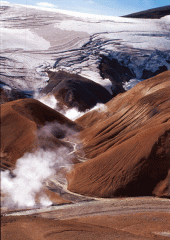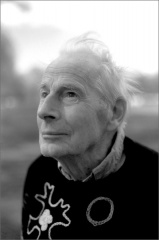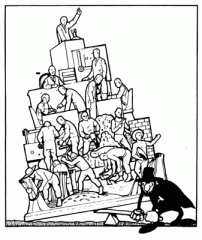'Ecology'
Tag Archive
Dec 09 2011
4 Comments
ALCOA, Century Aluminum, Corruption, Dams, Democracy deficit, Ecology, Economic Collapse, Economics, Helguvík, Impregilo, Jaap Krater, Kárahnjúkar, Landsvirkjun, Media bias, Reykjavik Energy
The profitability of Landsvirkjun, Iceland’s national energy company, is way too low. And worst off is the Kárahnjúkar hydro power plant, Europe’s largest dam, the company’s biggest and most expensive construction. Landsvirkjun’s director Hörður Arnarson revealed this during the company’s recent autumn meeting, and blamed the low price of energy sold to large-scale energy consumers, such as Alcoa’s aluminium smelter in Reyðarfjörður, as one of the biggest factors reducing profit.
These news echo the many warnings made by the opponents of the cluster of five dams at Kárahnjúkar and nearby Eyjabakkar, who repeatedly stated that the project’s alleged profitability was nothing but an illusion, but were systematically silenced by Iceland’s authorities.
Now, as these facts finally become established in the media—this time straight from the horse’s mouth—similarly bad news has arrived regarding another big Icelandic energy company. Reykjavík Energy has failed to make a profit from their 2007 and 2008 investments, effectively making them lose money.
At the same time, new research shows that the environmental impacts of the Kárahnjúkar dams are exactly as vast and serious as environmentalists and scientists feared.
And yet, more dams, geothermal power-plants and aluminium smelters are on the drawing table—presented as the only viable way out of the current economic crisis. Read More
Sep 11 2011
ALCOA, Alterra Power/Magma Energy, Century Aluminum, Ecology, Economic Collapse, Energy Master Plan, Helguvík, Hengill, Kárahnjúkar, Krafla and Þeistareykir, Krýsuvík, Landsvirkjun, Reykjavik Energy, Rio Tinto Alcan, Sigmundur Einarsson, Þjórsá, Þjórsárver
The equivalent of three Kárahnjúkar dams will be built in Iceland in the near future if the parliament will pass a proposition for a parliamentary resolution on Iceland’s Energy Master Plan, which the Ministers of Environment and of Industry presented three weeks ago. Despite this, Iceland’s energy companies and parliament members in favour of heavy industry have already started complaining – arguing that way too big proportion of Iceland’s nature will be declared protected, will the proposition pass. Among the power plants allowed for in the proposition are three dams in lower Þjórsá, which for years have been a topic of heavy debate and in fact completely split the local community and are more than likely to become the bone of contention between the two governmental parties as the Left Greens (VG) have, along with other environmentalists, voiced their opposition to the damming of Þjórsá.
The Energy Master Plan is a framework programme, meant to result in a long term agreement upon the exploitation and protection of Iceland’s glacial rivers and geothermal areas. Its making, which since 1999 has been in the hands of special steering committiees, established by the two above-mentioned ministries, reached a critical status in July this year when its second phase was finished and presented to the ministers who in mid August presented their proposition for a parliamentary resolution. Before it will be discussed in parliament the proposition will be open to comments and criticism from the public, as well as interested parties, energy and aluminium companies on the one hand, environmentalists on the other. Read More
Aug 27 2011
Ecology, Landsvirkjun, Þjórsá
Originally published by Reykjavík Grapevine
A plan to build three dams in the river Þjórsá could wipe out salmon in the river. National power company Landsvirkjun insist they have measures on the table to keep the salmon alive. Vísir reports that an environmental assessment has already confirmed that should the three proposed dams be built, the salmon that use the river will disappear.
Plans to dam Þjórsá have not been without their controversy, as the project has been heatedly debated for years now. In fact, the notion that damming up the river would wipe out salmon from the river was known as far back as 2002. While Landsvirkjun says they would construct what effectively amounts to a sperm bank for salmon to fertilise eggs, the Ministry for the Environment has looked at the plan and concluded that nothing in the plan indicates that it would even work.
The three dams have been green-lit, though, so the options now on the table are to either find some other way to save the river’s salmon while construction goes underway, or to pull the plug on construction, either temporarily or permanently. Neither option will be inexpensive for the parties involved.
Report by Dr. Ranghildur Sigurðardóttir on the effects of a dam at Urriðafoss in Þjórsá. (in Icelandic)
Jul 23 2011
Century Aluminum, Democracy deficit, Ecology, Economic Collapse, Energy Master Plan, Guðmundur Páll Ólafsson, Hengill, Kerlingafjöll, Krafla and Þeistareykir, Landsvirkjun, Reykjanes, Rio Tinto Alcan, Torfajökull, Tungnaá, Þjórsá
The making of Iceland’s Energy Master Plan, a framework programme concerning the exploitation and protection of the country’s natural resources, which has been in the making since 1999, has reached a critical state as a report on the process’ second phase was published in the beginning of July. The report includes a list of more than 60 areas, arranged from the perspectives of both protection and exploitation, which is supposed to lay the foundation for a final parliamentary resolution concerning the Master Plan. While those in favour of further exploitation, parallel to the continuous build-up of heavy industry, seem generally happy with the report, environmentalists are both sceptical and critical, stating that the exploitation value was always in the forefront of the process.
Like explained on the project’s official website the process was “split into two phases. The first phase, 1999–2003, evaluated and ranked 20 large-scale hydro-power options, mostly located in the highlands, and the same number of geothermal options in 8 high-temperature areas.” The second phase was supposed to “rank all the options to produce the final result,” including “an evaluation of whether some areas should be conserved completely, without any energy-harnessing activities.” Proposed power projects were said to be “evaluated and categorised on the basis of efficiency, economic profitability, and how they will benefit the economy as a whole,” while the “the impact on the environment, nature, and wildlife” was also supposed to be evaluated, “as well as the impact on the landscape, cultural heritage and ancient monuments, grazing and other traditional land use, outdoor activities fishing, and hunting.” Read More
Jan 31 2011
4 Comments
Alterra Power/Magma Energy, Century Aluminum, Ecology, Economic Collapse, Geothermal Energy, H.S. Orka, Helguvík, Hengill, Krýsuvík, Landsvirkjun, norðurál, Reykjanes, Reykjavik Energy, Sigmundur Einarsson, Þjórsá
Century Aluminum (Nordural) intends to build an aluminium smelter at Helguvík for producing 250.000 tpy, using 435 MW of electricity. At one point the intended size grew to 600.000 tpy and 625 MW of electricity but those plans have been cancelled. The first phase of the smelter was expected to start in 2010 and the 250.000 ton should be reached in 2013. Now there are already some big structures at the smelter site but no energy has been produced and moreover, there is no energy available.
Sigmundur Einarsson, a geologist at the Icelandic Institute of Natural History, has written some articles on this matter (in Icelandic). He has tried, amongst a number of other environmental scientists, to warn the Icelandic government about a new kind of collapse, an energy collapse due to following far too optimistic speculation of irresponsible people. Read More
Jan 28 2010
Climate Change, Dams, Ecology, Greenwash, hydropower
by Aviva Imhof & Guy R. Lanza
 Big dams have a serious record of social and environmental destruction, and there are many alternatives. So why are they still being built?
Big dams have a serious record of social and environmental destruction, and there are many alternatives. So why are they still being built?
On a hot May day, a peasant farmer named Bounsouk looks out across the vast expanse of water before him, the 450-square-kilometer reservoir behind the new Nam Theun 2 dam in Laos. At the bottom of the reservoir is the land where he once lived, grew rice, grazed buffalo, and collected forest fruits, berries, and medicinal plants and spices. Now there is just water, water everywhere.
Read More
Nov 17 2009
4 Comments
ALCOA, Alterra Power/Magma Energy, Amazon, Arms Industry, Bakki, Century Aluminum, Climate Change, Ecology, Economics, Geothermal Energy, Greenwash, H.S. Orka, Helguvík, Jaap Krater, Landsvirkjun, Mining, Miriam Rose, Reykjavik Energy, Rio Tinto Alcan, Saving Iceland, South Africa
By Jaap Krater and Miriam Rose
In: Abrahamsky, K. (ed.) (2010) Sparking a World-wide Energy Revolution: Social Struggles in the Transition to a Post-Petrol World. AK Press, Edinburgh. p. 319-333
Iceland is developing its hydro and geothermal resources in the context of an energy master plan, mainly to provide power for expansion of the aluminium industry. This paper tests perceptions of geothermal energy as low-carbon, renewable and environmentally benign, using Icelandic geothermal industry as a case study.
The application of geothermal energy for aluminium smelting is discussed as well as environmental and human rights record of the aluminium industry in general. Despite application of renewable energy technologies, emission of greenhouse gases by aluminium production is set to increase.
Our analysis further shows that carbon emissions of geothermal installations can approximate those of gas-powered plants. In intensely exploited reservoirs, life of boreholes is limited and reservoirs need extensive recovery time after exploitation, making geothermal exploitation at these sites not renewable in the short to medium term. Pollution and landscape impacts are extensive when geothermal technology is applied on a large scale.
Krater and Rose – Development of Iceland’s Geothermal Energy – Download as PDF
The full publication will be available from Jan. 15, 2010. ISBN 9781849350051.
Feb 09 2009
ALCOA, Bakki, Bechtel, Century Aluminum, Climate Change, Dams, Ecology, Economic Collapse, Energy Prices, Geothermal Energy, Greenwash, Hengill, hydropower, IMF, Kárahnjúkar, Landsvirkjun, Miriam Rose, Reykjavik Energy, Rio Tinto Alcan, Saving Iceland, Þjórsárver
From New Renaissance Magazine
By Miriam Rose
The economic issues currently causing mass demonstrations in Iceland have a less publicised ecological cousin, and one which the IMF has recently identified as part of the economic collapse. In 1995 the Ministry of Industry and Landsvirkjun, the national power company, began to advertise Iceland’s huge hydropower and geothermal energy potential. In a brochure titled “Lowest energy prices!!” they offered the cheapest, most hard working and healthiest labour force in the world, the cleanest air and purest water – as well as the cheapest energy and “a minimum of environmental red tape” to some of the world’s most well known polluting industries and corporations (such as Rio Tinto and Alcoa). This campaigning has led to the development of an ‘Energy Master Plan’ aimed at damming almost all of the major glacial rivers in Iceland, and exploiting all of the geothermal energy, for the power intensive aluminium industry. The loans taken by the Icelandic state to build large scale energy projects, and the minimal payback they have received from the industry, has been a considerable contributing factor to the economic crisis, while at the same time creating a European ecological crisis that is little heard of.
The Largest Wilderness in Europe
I first visited Iceland in 2006 and spent a week with activists from the environmental campaign Saving Iceland, a network of individuals from around Europe and Iceland who decry the fragmentation of Europe’s largest wilderness in favour of heavy industry. From these informed and passionate folk I learned of the 690 MW Kárahnjúkar dam complex being built in the untouched Eastern Central Highlands to power one Alcoa aluminium smelter in a small fishing village called Reydarfjörður. The dams formed the largest hydro-power complex in Europe, and were set to drown 57 km2 of beautiful and virtually unstudied wilderness, the most fertile area in the surrounding highlands. Ultimately it would affect 3% of Iceland’s landmass with soil erosion and river silt deprivation. They also explained how materials in the glacial silt transported to the oceans bonds with atmospheric CO2, sinking carbon. The damming of Iceland’s glacial rivers not only decreases food supply for fish stocks in the North Atlantic, but also negatively impacts oceanic carbon absorption, a significant climatic effect. After taking part in demonstrations at the construction site of the Alcoa smelter (being built by famous Iraq war profiteers Bechtel), I went to see the area for myself. Read More
Jan 15 2009
Ecology
IHT – Arne Næss, a Norwegian philosopher whose ideas about promoting an intimate and all-embracing relationship between the earth and the human species inspired environmentalists and Green political activists around the world, died Monday. He was 96. His editor, Erling Kagge, confirmed his death to Agence France-Presse.
In the early 1970s, after three decades teaching philosophy at the University of Oslo, Næss (pronounced Ness), an enthusiastic mountain climber and an admirer of Rachel Carson’s “Silent Spring,” threw himself into environmental work and developed a theory that he called deep ecology. Its central tenet is the belief that all living beings have their own value and therefore, as Naess once put it, “need protection against the destruction of billions of humans.” Read More
Oct 13 2008
Capitalism, Ecology, India, Mining, Repression
By Snorri Páll Jónsson Úlfhildarson, originally published in Morgunblaðið –
In his article, “Is There Enough Aluminium in the World?” Jakob Björnsson, former director of energy affairs points out that “by far the biggest part of alulminium usage in the world today is in the industrial countries, where 25% of the people of the world live.” He also mentions that when China and India will have gone through proper indutrialization, 62% of humanity will live in industrial countries and the other 38% are also on their way there; that they want to enjoy the indstrialized countries’ living standards, even dream of cars and beer cans. These are very important facts.
Two things make Jakob’s article very interesting. Firstly, he says that it is a realistic oppurtunity that all human beings on the planet can reach the “qualities of life” and lifestyle that Occidentals now live with. Secondly, he states that human equalitiy is possible inside the system we live in. Read More
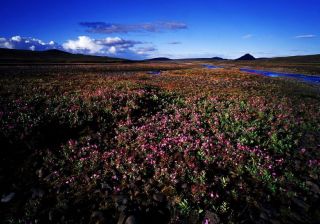
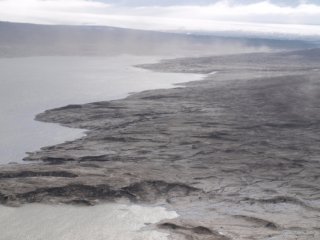
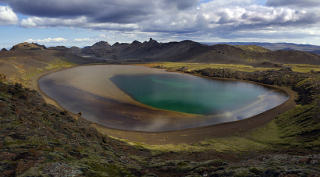
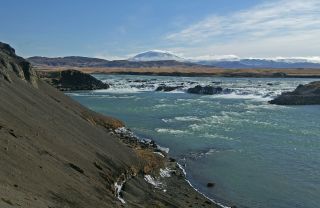
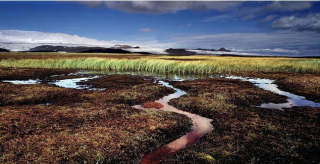
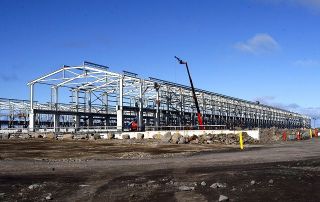
 Big dams have a serious record of social and environmental destruction, and there are many alternatives. So why are they still being built?
Big dams have a serious record of social and environmental destruction, and there are many alternatives. So why are they still being built?